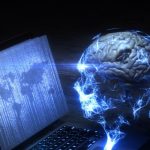A congressional spotlight now shines on Anthropic and its AI platform, Claude, after allegations surfaced that a likely China-linked group used the technology as part of an expansive cyber espionage campaign. The House Homeland Security Committee has requested that Anthropic CEO Dario Amodei discuss the circumstances behind this incident and share insights during an upcoming hearing. Lawmakers are aiming to understand the scope of risk that AI-powered tools present, especially when state-sponsored actors are involved and advanced technologies are at their disposal. The intersection of AI capabilities and global security vulnerabilities has never been more prominent in Washington’s agenda. This episode has raised fresh questions about responsibility, transparency, and what comes next in AI security policy.
Similar incidents in recent years have triggered government concern about the potential misuse of artificial intelligence by sophisticated threat actors, though few had previously involved the direct testimony of AI company leaders. Previous reporting on Anthropic’s handling of sensitive security incidents focused more on technical containment, whereas the latest developments expand the conversation to broader policy implications and the need for multi-sector oversight. The current attention from the committee appears to be a more coordinated approach, including not just AI, but also emerging threats posed by the combination of quantum computing and cloud infrastructure, reflecting a heightened sense of urgency.
What Prompted the Congressional Hearing?
The committee’s request follows disclosure by Anthropic that its Claude AI was exploited to help automate parts of a global cyber campaign targeting at least 30 organizations. The attack, attributed to groups possibly linked to China, made use of commercially available AI despite existing safeguards. Chair Rep. Andrew Garbarino and subcommittee leaders noted the campaign’s implications, stating that even robust security measures can fall short against determined, well-equipped actors using state-of-the-art technology.
What Will the Hearing Address?
Beyond just Anthropic’s testimony, the panel has also called on Thomas Kurian from Google Cloud and Eddie Zervigon from Quantum Xchange to share expert perspectives. The committee aims to scrutinize how advancements in AI, quantum computing, and large-scale cloud infrastructure may be influencing both attack vectors and defensive strategies. The potential for adversaries to combine AI with future quantum capabilities—and thereby bypass current cryptographic defenses—will be a central focus of the discussion.
How Are Policymakers Reacting?
Policymakers and industry leaders continue to debate the right mix of regulation, oversight, and technological countermeasures. Anthropic received acknowledgment for its openness in reporting the incident. In the committee’s letter, Amodei is asked to detail both the technical and procedural lessons learned. The hearing is seen as part of a larger effort by lawmakers to better anticipate and limit national security risks stemming from new technologies.
“This incident is consequential for U.S. homeland security because it demonstrates what a capable and well-resourced state-sponsored cyber actor, such as those linked to the PRC, can now accomplish using commercially available U.S. AI systems, even when providers maintain strong safeguards and respond rapidly to signs of misuse,” wrote House Homeland Chair Rep. Andrew Garbarino and subcommittee leaders.
“Your insight into integrating quantum-resilient technologies into existing cybersecurity systems, managing cryptographic agility at scale, and preparing federal and commercial networks for post-quantum threats will be critical,” the committee members wrote in their letter to Quantum Xchange CEO Eddie Zervigon.
The rise of commercially available AI platforms like Claude has complicated traditional cybersecurity models and highlights the balance needed between innovation and risk management. As more information emerges from the upcoming hearing, organizations across sectors may need to reconsider how AI systems are incorporated into both their technology pipelines and their security protocols. Large-scale threats in cyberspace increasingly involve overlapping technologies: the fusion of AI, quantum research, and hyperscale cloud computing. This convergence suggests a future in which safeguards themselves must be multidimensional. For those in technology leadership roles, understanding cross-disciplinary risks and fostering transparent reporting practices could help mitigate the impact of state-backed campaigns. Meanwhile, for policymakers, ongoing evaluation of regulatory frameworks will be essential to keep pace with the rapid deployment of advanced digital tools.








